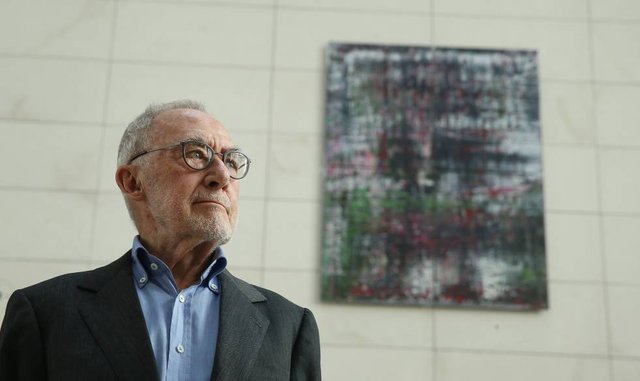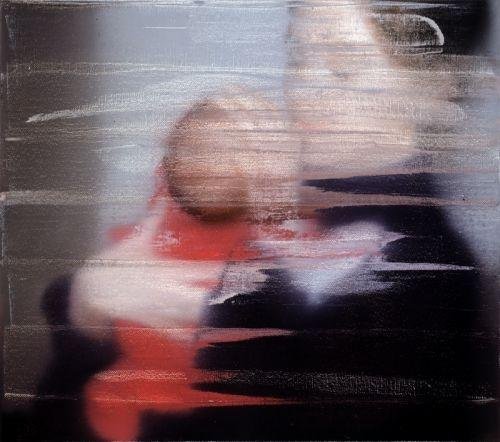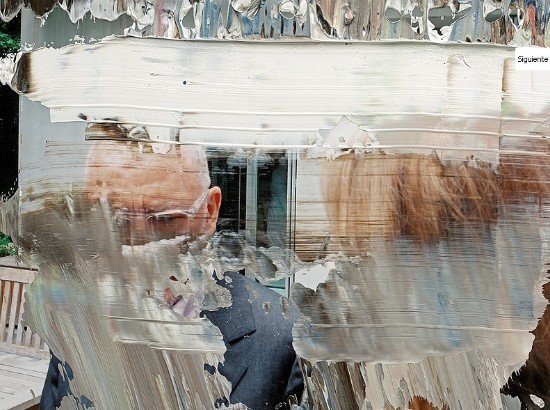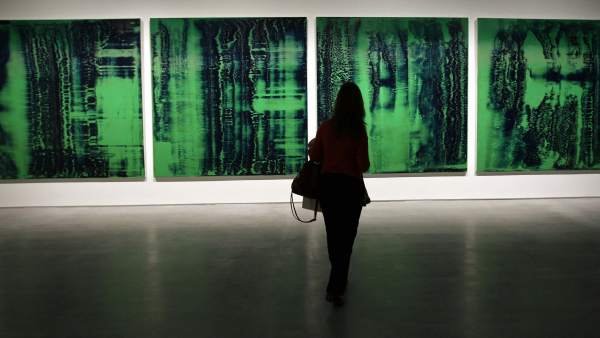Amazing nature #49 - Gerhard Richter, thousand styles in painting
Today we will be talking about one of the most radical personalities in his art, I would not dare to classify him as a contemporary artist, rather eclectic, and superb. Come with me to learn a little about the life and work of Gerhard Richter, the painter of a thousand styles.

Born in Dresden 1932, from a very young age he felt inclined by the artistic world, at the age of 30 he made his first exhibition and years later he destroys his works to start a period based on paintings inspired in photographs, becoming a painter with multiple styles and pictorial genres.
One of the most impressive things about this painter is his ability to paint in different techniques, is as good in abstraction as in the figurative, that is to say you have to have a lot of tact to study. She usually uses many colors and gray monochrome.

His childhood is marked by having grown up during the years around the Second World War, his father was a teacher in a school and a member of the Nazi party, his youth is spent in Communist Germany, where he used to paint banners and political posters, by the same discovers Kassel in Paris where he discovers formalism, Shortly before the Berlin wall was erected, Richter stayed on the west side and studied at the Dösseldorf academy, where he met Sigmar Polke and Blinky Palermo, all influenced by American pop art, decided to adapt it to German culture, and ended up calling it capitalist realism.

In the first period, still in East Germany, there is a painting of bathers on the beach that evokes the memory of Picasso and Max Beckmann. Then come the portraits and landscapes based on photographs he painted in the 1960s. Or one of his minimalist abstractions of colored squares. And above all the dazzling gestural abstractions of the eighties. What can all these varieties of Richter's stylistic repertoire have in common? Perhaps the evidence of a certain distancing and annihilation of differences. The photorealistic portraits, landscapes and still lifes are images of images, where the reference to reality is postponed again and again, it differs indefinitely.
But also in Richter's abstractions there is distancing: reticence with respect to the spontaneity of the gestural and the expressive value of the pictorial act. All this has created Richter's reputation as a conceptual artist who, instead of painting with conviction, would use the brushes for a critical reflection on the conventions of painting. However, the artist himself (as in the already classic interview with Benjamin Buchloh in 1986) has denied any irony, any second intention in his dealings with the canvas and pigments. And it may be that Gerhard Richter's ambivalence, mistakenness, is the most appropriate way, in an unbelieving age, to defend the validity and vitality of painting.
As we can see, this man's life took place at a historical moment in which I could say that he was fortunate to live to tell the tale and lived to develop artistically, despite all the limitations he could find at that time.

Thank you for reading

If you liked reading this article, feel free to FOLLOW ME, UPVOTE and RESTEEM! It's always appreciated =D. Thank you all for your support and see you soon for the news flamingirl's adventures!


